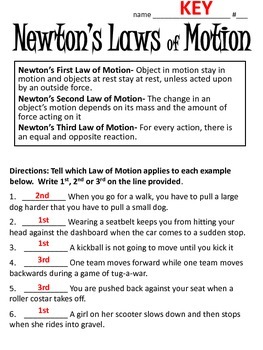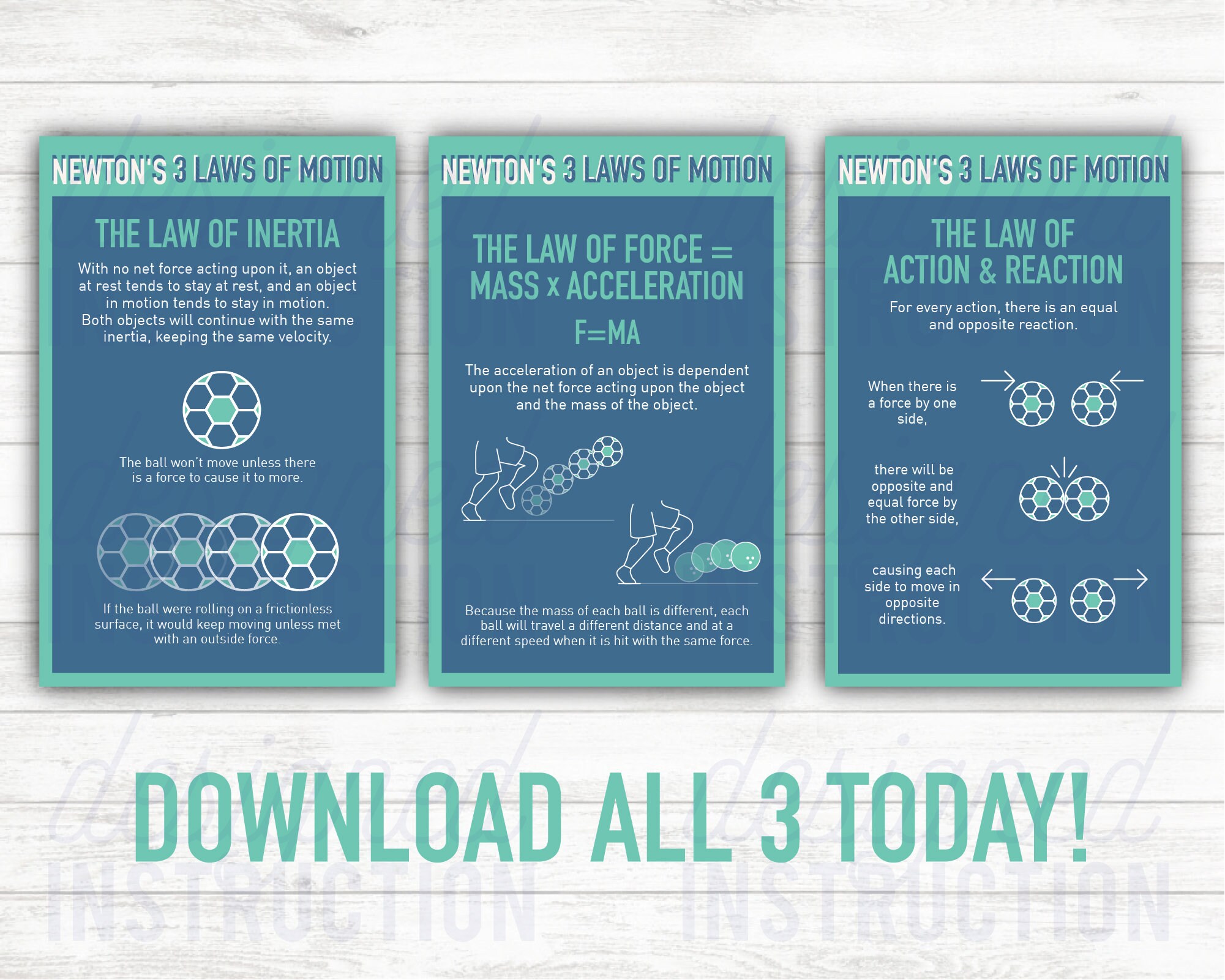

However, while the amount of force in both directions is equal, you have a lot more mass than the ball does, so the ball moves more than your hand does. Newton's third law states, "For every action, there is an equal and opposite reaction." When we push a ball, it rolls, but the ball also pushes a little bit against your hand.

Newton's Laws: Misconceptions, Finding Acceleration, and Individual Forces.Newton's second law tells us something very important about the relationship between an object and its motion: A force exerted on an object causes it to accelerate, and the more mass an object has, the more force is necessary to slow the object down, speed it up, or make it turn. You would need to use more force because the bowling ball has more mass. Now, imagine trying to push a bowling ball. Pushing the ball to get it rolling should be easy, since it does not have a lot of mass. Imagine that ball sitting on a table is a basketball or soccer ball. Newton's second law of motion says, "The force acting on an object is equal to the mass of that object times its acceleration." Newton's second law is expressed as the equation F = ma, where "F" is the force acting on the object, "m" is the mass of the object, and "a" is the object's acceleration. Inertia and Newton's First Law of Motion.Once it's hit, the ball will roll until another force makes it stop or change direction. The ball sits on the table without moving until you apply a force to it, such as hitting it. Newton's first law of motion states, "An object at rest stays at rest and an object in motion stays in motion, unless acted on by an external force." The easiest way to think about this law is to imagine a ball sitting on a table. These principles have collectively become known as Newton's laws of motion.

In it, he describes three basic principles that explain how forces affect objects. Though more than 300 years have gone by, Newton's book is still considered one of the most important scientific works ever published. In 1687, he published Philosophiae Naturalis Principia Mathematica. Sir Isaac Newton was a mathematician and scientist in the 17th century. Have you ever wondered why a ball rolls so far when you push it but the wall of your house doesn't move no matter how hard you push on it? Or maybe you've wondered why a feather falls slowly but a book falls straight to the ground? There are answers to those questions, and they start with a man named Isaac Newton.


 0 kommentar(er)
0 kommentar(er)
